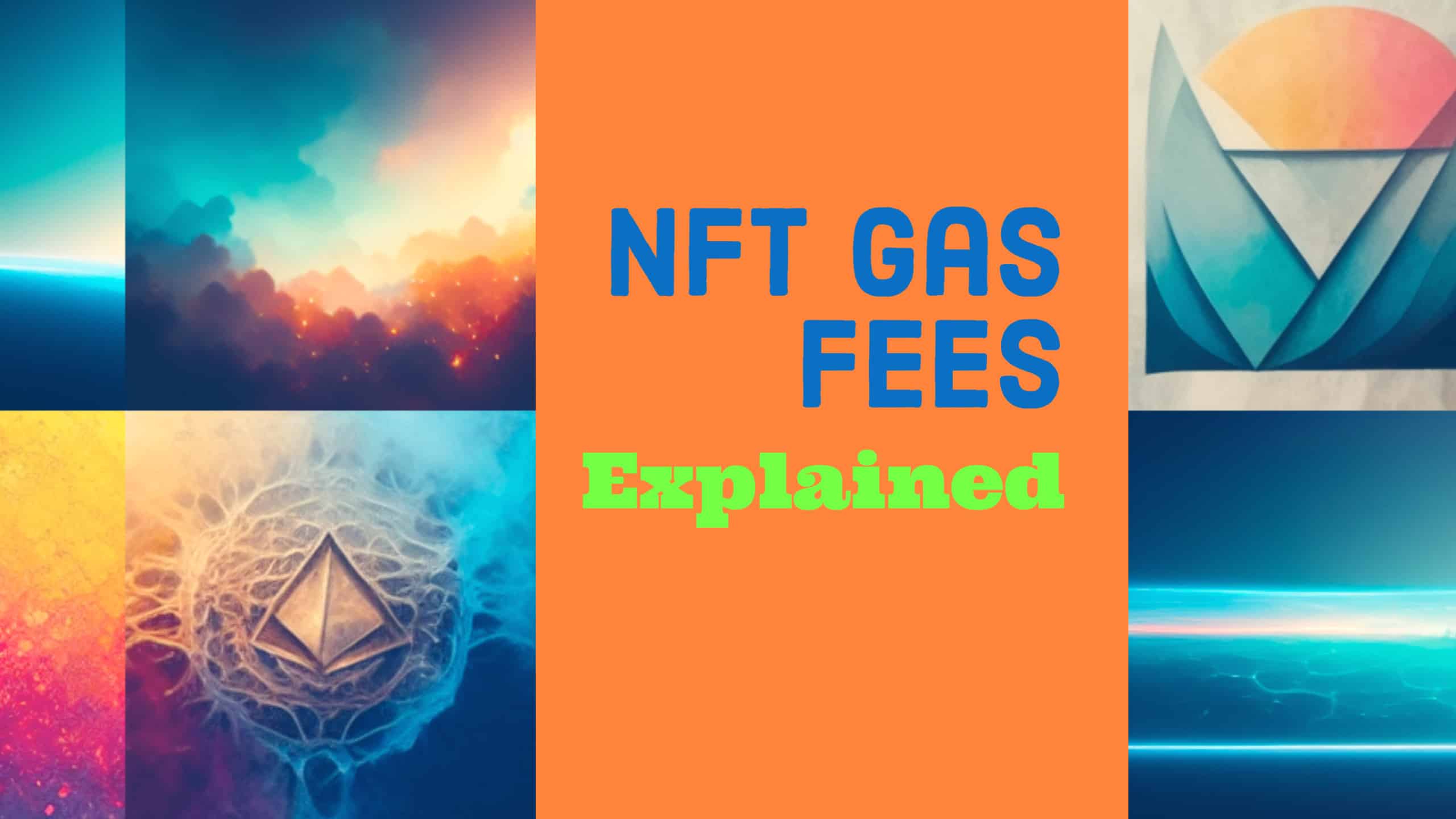“Gas fees” have been the woe of many NFT (non-fungible token) traders. With every transaction that is called up, such as a transfer, a sale or a purchase, NFT traders have to pay gas fees. But what are gas fees actually? At the simplest, non-technical level, they are primarily variable transaction fees that are payable with every transaction. But why does there need to be gas fees?
NFT Gas Fees and Blockchain
Blockchain miners need to verify transactions (this is done automatically via mining rigs) and every verification charges gas fees for the “work” performed. This verification is a feature that is built into every blockchain to ensure that the transactions performed are compliant with the standards of the blockchain. Gas fees can tend to vary, sometimes quite drastically. You can check the gas fee rates at https://gwei.at. But why do gas fees vary greatly? Well, to answer that question we need to go back to the very definition of “blockchain”. A “blockchain” is a network of interconnected nodes where blocks of data are transferred between them. Since the data in blockchains usually are transferred in blocks of 1MB, a larger-sized NFT would require more data to be transferred within the chain. Compare, let’s say a low-resolution JPEG of less than 1MB in size versus a high-resolution MP4 of 5GB in size. Of course the MP4 would require more data for the transfer, thereby increasing gas fees.
For this reason, many NFT projects which have larger files prefer to put them off-chain. That is to say, the smart contract that accompanies the sale of the NFT sits on the chain, but the item itself doesn’t. When this happens, the ownership of the NFT via the smart contract remains immutable. That is to say, no one can dispute the rightful owner of any NFT because the smart contract cannot be changed without the owner’s permission. However, because the digital item itself sits off the chain, any transactions involving the NFT does not incur high gas fees. So where does the item sit? The item can sit simply on a cloud on the HTTPS (hyper text transfer protocol) backbone, or the item can sit on the IPFS (inter planetary file transfer) network (the IPFS was created as an alternative to the HTTPS backbone, inspired greatly by P2P networks such as Napster and Bittorrent).
Ethereum blockchain and Proof-of-work
However, this is primarily a workaround that NFT projects use. Is there a more systematic way that we can deploy to drastically reduce gas fees? Well, the Ethereum blockchain is proposing an answer.
The Ethereum blockchain, similar to Bitcoin and many other blockchains currently runs via a “proof-of-work” mechanism. A “proof-of-work” mechanism is a decentralized consensus mechanism that requires the miners of a network to expend effort solving an arbitrary mathematical puzzle to prevent anybody from gaming the system. Users with greater hash power have a higher chance of getting rewards in the form of units of the coin (in Ethereum language, the ERC-20 token). Miners will rush to grab such jobs because they might have a chance to earn something.
As we demonstrated above, the mechanism is vital to the maintenance of blockchains, but they produce gas fees. Furthermore, mining requires a whole lot of electricity in the real world, and the payments made for this utility may very well outstrip the returns in cryptocurrency from doing mining work on the blockchain.
To be fair, “proof-of-work” as a mechanism was not created in the web3 era. It was conceptualised by Moni Naor and Cynthia Dwork in 1993 (Web 1.0 era!) as a mechanism to secure networks and protect against malicious attacks. Imagine you own a website, and it can handle up to 1000 visitors at any one time. But, someone out there doesn’t like you and wants to spam your website with 1001 fake user requests at once. Your website would surely go down because it’s not able to handle that amount of visitors are any one time, right? Not if you implement a proof-of-work, where each request made by a visitor must be verified by a basic amount of “work” which takes time. This therefore ensures that there can never be 1001 visitors to your website at any time.
Ethereum 2 hopes to do away with the “proof-of-work” and instead replaces it with “proof-of-stake”. Just like proof-of-work, proof-of-stake is also a decentralised consensus mechanism, but it allows cryptocurrency and NFT owners to validate block transactions based on the number of coins a validator stakes. Users who stake more tokens have a higher chance of getting rewards. In this way, it works more like a lottery for which each staked token acts as a ticket. “Staking” refers to a process where cryptocurrencies or NFTs are kept locked away in a staking storage, effectively taking it out of market circulation.
As can be seen, there won’t be as much of a rush between miners to grab mining jobs available. Under proof-of-work, the mining jobs are open to everyone. Those who are able to solve the puzzles fastest are the ones who will be rewarded. This expands a lot of energy in the real world, and also produces a lot of gas fees within the blockchain. Under proof-of-stake, miners will be selected based on the number of tokens they stake. This reduces the amount of electricity used in the real world, and also promises to concurrently reduce gas fees significantly.
Ethereum plans to port over its existing tokens and smart contracts onto the Ethereum 2 blockchain. There, the ETH coin would still be used under the ERC-20 standard. NFTs can still be minted under the ERC-721 standard, lazy minted under the ERC-1155 standard, and rented out under the ERC-4907 standard. The only difference is that the underlying consensus mechanism would change from proof-of-work to proof-of-stake. This would enable a much greater adoption of web3 in the mainstream community (especially those who are worried about its carbon footprint) as well as reduce the gas fees for transactions greatly. This might even allow NFT projects to host all their digital items on the blockchain itself, so that both the smart contract and the item are all located in one single place.
Conclusion
In conclusion, gas fees have been a major issue for NFT traders. With every transaction, they have to pay gas fees, which can be quite costly. However, there are ways to avoid paying gas fees, such as using a different blockchain or transferring your tokens to a different wallet.





